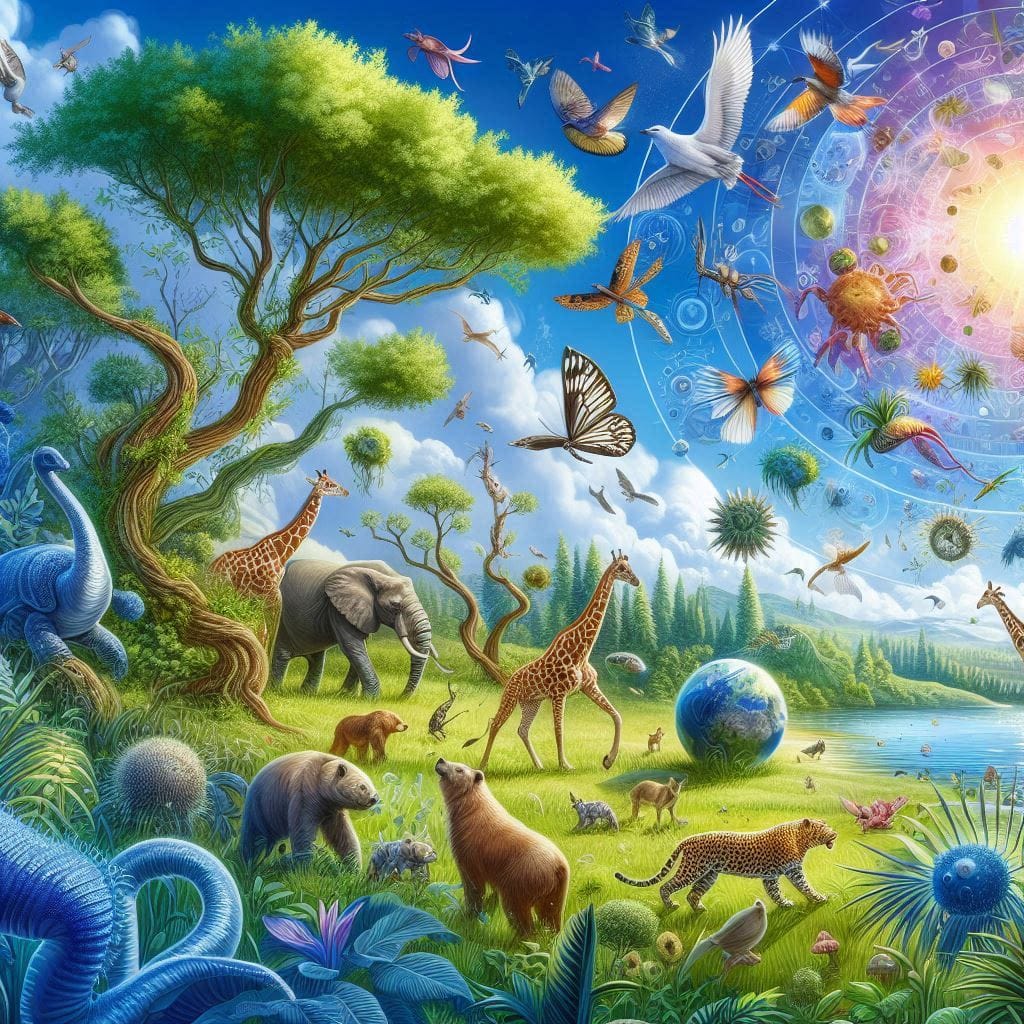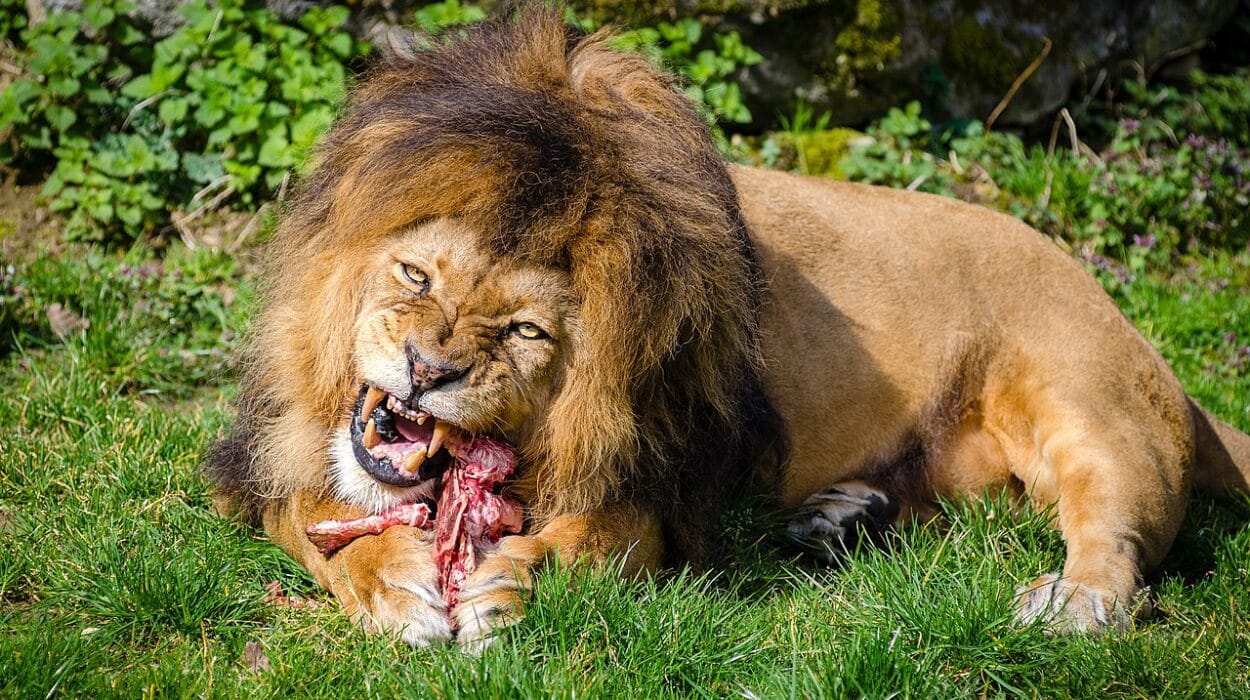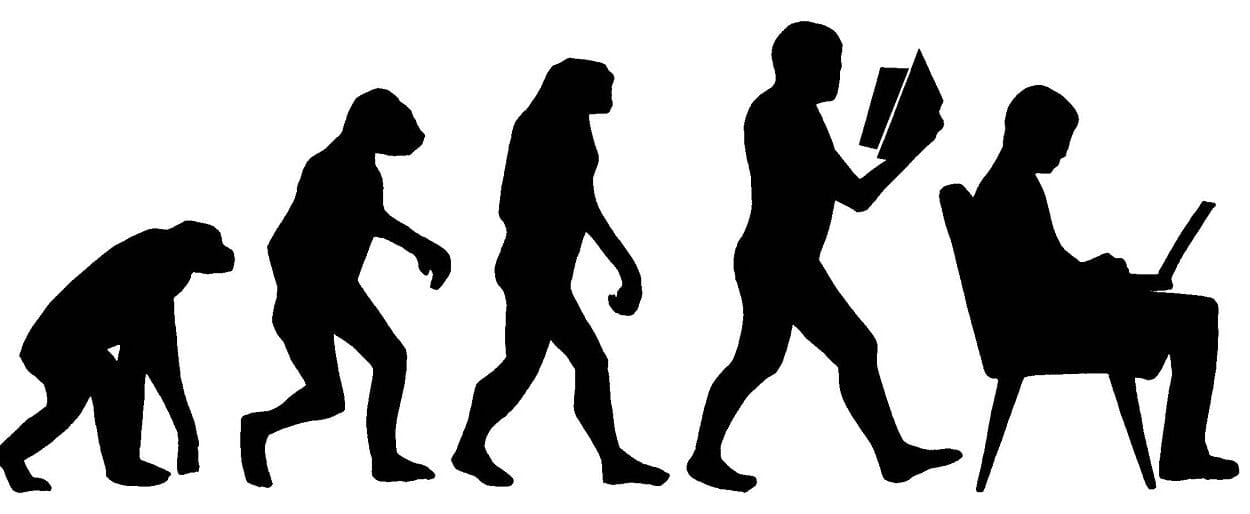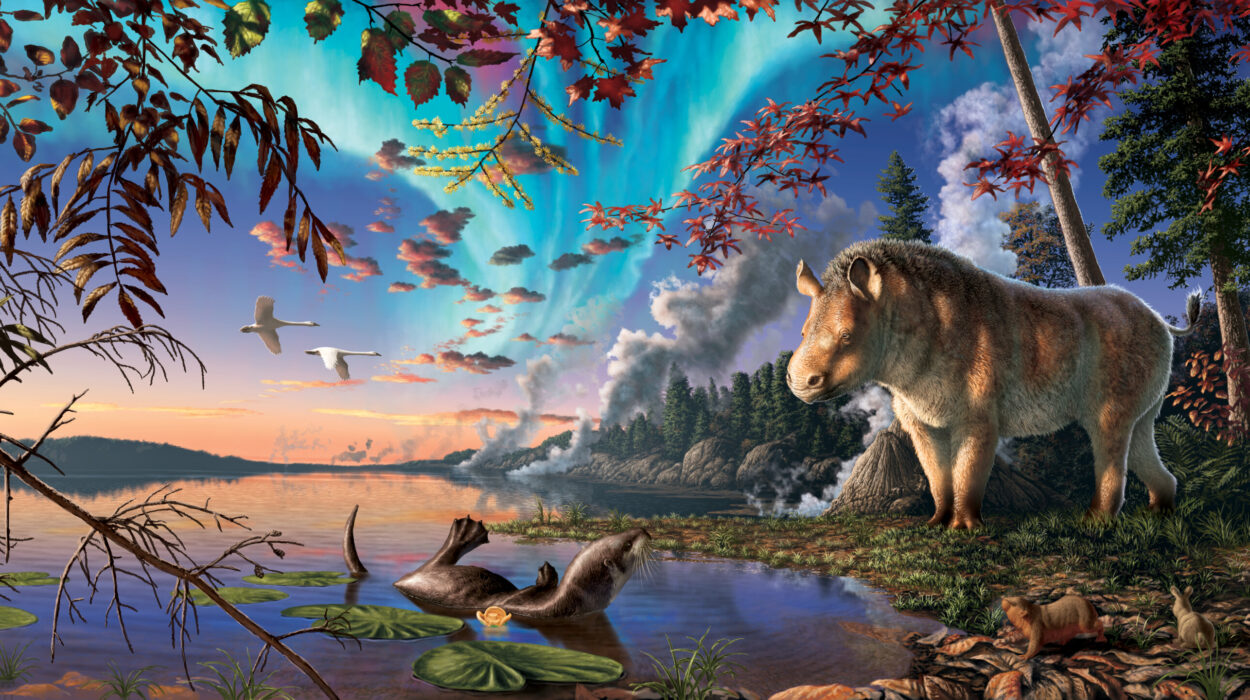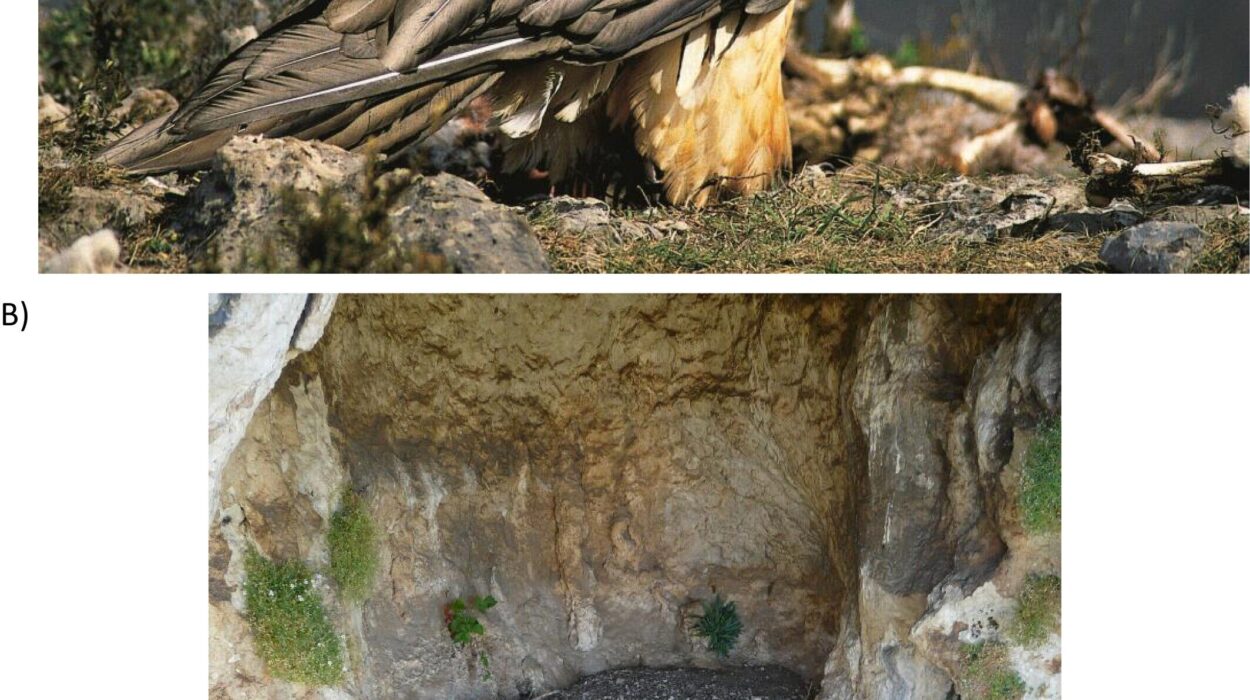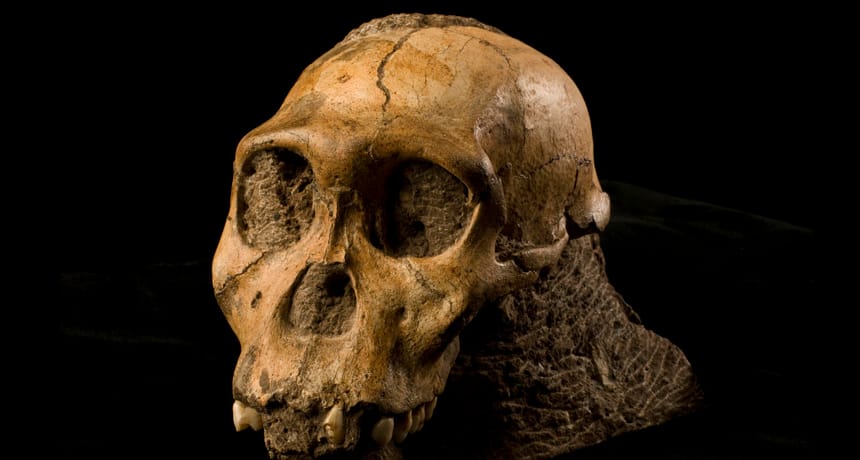Life on Earth has never existed in a vacuum. From the deepest ocean trenches to the highest mountain peaks, the conditions of the environment—the temperature, the chemistry, the landscape, the presence of predators or food—have continuously shaped the destinies of organisms. The Earth has been a world in motion, forever transforming. And in response to this dance of planetary change, life has evolved in a never-ending ballet of adaptation, mutation, extinction, and emergence.
When we think of evolution, we often focus on genes, DNA, and the slow accumulation of genetic mutations. But those genetic changes only have meaning in the context of their environment. The environment is not just the backdrop against which evolution unfolds. It is the director of the play, the invisible hand that sculpts the traits of organisms, nudging them toward survival—or annihilation.
To understand how environment drives evolutionary change is to understand one of the most powerful truths in all of biology: that life is inextricably tied to its surroundings. Where the planet shifts, life shifts with it. The environment doesn’t just influence evolution; it propels it.
The Dynamic Dance Between Genes and the Environment
Evolution works on variation, and variation is everywhere. No two organisms are genetically identical (aside from clones or identical twins), and that genetic diversity is the raw material on which natural selection acts. But which traits are favored, and which are culled, depends entirely on the pressures of the environment.
A polar bear’s thick white fur is not “good” in any abstract sense—it’s good because it helps the bear survive in a freezing, snowy habitat. That same fur would be a death sentence in the tropics. Evolution, driven by natural selection, operates like an artist sculpting clay: the genes are the material, but the environment is the hand shaping the final form.
This relationship becomes especially vivid in species that occupy changing environments. A species of fish living in a murky lake might evolve larger eyes to gather more light. If that same lake becomes clearer due to some environmental shift, smaller eyes may suddenly become advantageous. Traits rise and fall in value, depending on the shifting canvas of climate, geography, competition, and catastrophe.
Climate Change as an Evolutionary Catalyst
Perhaps the most obvious and dramatic driver of environmental change is the climate. Over geological time, Earth’s climate has swung between scorching greenhouse conditions and frigid ice ages. Each of these shifts has triggered waves of evolutionary change—and sometimes, mass extinctions.
Roughly 55 million years ago, a sudden global warming event known as the Paleocene-Eocene Thermal Maximum transformed ecosystems worldwide. Forests spread into the polar regions, ocean temperatures rose dramatically, and entire assemblages of species shifted in distribution. In response, mammals underwent a burst of rapid evolution. Early primates diversified, horses shrank to dog-sized animals to cope with the new heat, and tropical species migrated to newly warm latitudes.
On the flip side, the repeated glaciations of the Pleistocene epoch pushed animals to adapt to cold or face extinction. Mammoths, woolly rhinoceroses, and saber-toothed cats evolved thick fur and fat reserves to survive freezing temperatures. When the ice sheets receded, many cold-adapted species vanished, while others were forced to evolve again or migrate to colder areas.
These climate swings didn’t just shape the physical traits of animals—they influenced behaviors, life cycles, and even the rise of intelligence. Early humans evolved larger brains and more complex societies partly in response to a wildly fluctuating environment that demanded flexibility and innovation.
Catastrophes and Their Aftermath
Sometimes the environment doesn’t change gradually. Sometimes it changes in a flash. Asteroid impacts, massive volcanic eruptions, and other catastrophes can wipe out ecosystems in days or even hours. These events are devastating—but they are also evolutionary reset buttons.
The most famous of these was the asteroid impact 66 million years ago that ended the age of dinosaurs. The immediate aftermath was apocalyptic: wildfires raged, the sky darkened, photosynthesis stalled, and ecosystems collapsed. Three-quarters of all species went extinct.
But in the ashes of that catastrophe, evolution exploded. Mammals, which had previously lived in the shadow of the dinosaurs, diversified into every corner of the world. Birds, the only surviving lineage of dinosaurs, flourished. Without the asteroid, there might be no humans.
This pattern has repeated again and again. Mass extinctions—there have been at least five major ones in Earth’s history—create openings for new life to evolve. The extinction of dominant groups removes evolutionary competitors, allowing previously marginalized species to radiate and diversify. These moments of devastation are, paradoxically, among the greatest drivers of evolutionary creativity.
Geography as Destiny
The physical layout of the world—the mountains, rivers, oceans, and islands—has a profound influence on evolution. When populations become isolated from each other by geographic barriers, they evolve separately, adapting to their own unique environments. This process, called allopatric speciation, is responsible for much of the biodiversity on Earth.
The Galápagos Islands provided a classic example for Charles Darwin. He observed that each island had its own distinct species of finch, each with beaks adapted to different food sources. These birds had descended from a common ancestor, but isolation and differing environmental pressures caused them to evolve in divergent directions.
On continents, similar patterns emerge. The rise of mountain ranges like the Andes or Himalayas isolates populations on either side, leading to new species over time. Rivers can divide forests, deserts can create impassable barriers, and even ocean currents can shape the movement and evolution of marine life.
Island environments are particularly potent evolutionary laboratories. With limited resources and few predators, island species often evolve unusual traits—such as gigantism in some tortoises and flightlessness in certain birds. But island species are also especially vulnerable to environmental change. A new predator, an invasive species, or a small rise in sea level can wipe out organisms that have evolved in isolation for millennia.
The Arms Race: Co-evolution in Action
The environment is not just climate or geography. For most organisms, the environment also includes other living things: predators, prey, parasites, and competitors. When one species evolves, it often creates pressure on another species to evolve in turn. This process, known as co-evolution, drives some of the most dramatic evolutionary changes.
Consider the relationship between cheetahs and gazelles. As cheetahs evolved to become faster, gazelles evolved to become even more agile. Each adaptation in one species spurred a counter-adaptation in the other. This evolutionary arms race sharpened both predator and prey, sculpting their bodies for speed and survival.
Plants and pollinators offer another powerful example. Flowers evolve colors, shapes, and scents to attract specific pollinators. In turn, those pollinators evolve specialized structures to extract nectar and carry pollen efficiently. This mutual dependency has produced extraordinary complexity—like the orchid species that can only be pollinated by a single type of moth with an equally elaborate proboscis.
Parasitism and host immunity also lead to fierce co-evolution. As pathogens evolve new strategies to invade and reproduce, hosts evolve defenses to fight back. This ever-changing battlefield is why the flu virus evolves so rapidly—and why our immune systems are among the most complex biological systems in the world.
Human Influence: A New Environmental Force
For most of Earth’s history, environmental change was driven by natural forces—tectonics, climate, catastrophes. But in the last few thousand years, a new force has emerged: humanity.
Humans have become the architects of the environment. We build cities, dam rivers, deforest rainforests, pollute oceans, and change the composition of the atmosphere. And we do it at an unprecedented speed. This new human-shaped world—sometimes called the Anthropocene—is now one of the dominant drivers of evolutionary change on Earth.
Species are evolving in response to urban environments. Some birds in cities sing at higher pitches to be heard over traffic. Certain insects are becoming resistant to pesticides. Rats, raccoons, and cockroaches are evolving behaviors and physiologies suited for life among humans.
Climate change, fueled by greenhouse gas emissions, is shifting habitats, altering food webs, and accelerating the pace of environmental transformation. Coral reefs are bleaching, Arctic ice is melting, and species are migrating toward the poles. In this rapidly changing world, evolution is happening in real time.
At the same time, human activity is reducing biodiversity. Habitat destruction, overhunting, and the introduction of invasive species are causing extinction rates to soar. Many species are disappearing before they even have a chance to adapt. While evolution can work quickly in some cases, it cannot always keep up with the pace of environmental destruction.
Evolution’s Speed Limits and Surprising Spurts
One of the myths about evolution is that it is always slow. It’s true that many evolutionary changes take thousands or millions of years. But sometimes, when environmental pressure is intense, evolution can occur over just a few generations.
This process—called rapid evolution or microevolution—has been documented in numerous species. Bacteria evolve antibiotic resistance with astonishing speed. Insects become immune to chemical pesticides within a few seasons. Fish in polluted rivers evolve tolerance to toxins in just a few decades.
The speed of evolution depends on many factors: the rate of reproduction, the strength of environmental pressure, the size of the population, and the amount of genetic variation. Species with short lifespans and high reproductive rates can evolve quickly. Larger, slower-reproducing animals like elephants or whales have a harder time adapting rapidly.
Even humans are still evolving. The ability to digest lactose in adulthood, the development of resistance to certain diseases, and even subtle shifts in human behavior and physiology suggest that environmental pressures—diet, disease, lifestyle—continue to shape our species.
Feedback Loops and Tipping Points
The relationship between environment and evolution is not one-way. Sometimes, evolution changes the environment, which in turn affects further evolution. This feedback loop can create cascading effects over time.
When early plants colonized land, they altered the atmosphere by releasing oxygen. That oxygen allowed the evolution of larger, more complex animals. When land plants evolved roots and leaves, they changed the landscape, creating soil and stabilizing rivers. This allowed for new ecosystems—and new evolutionary pathways.
Beavers are famous for transforming their environment by building dams. In doing so, they create wetlands that support dozens of other species. Coral reefs, built by tiny marine animals, provide habitat for thousands of ocean species. These “ecosystem engineers” show how evolution and environment continually shape each other in a dynamic loop.
But feedback loops can also lead to tipping points—moments when the environment changes so drastically that evolution can’t keep up. These moments often lead to mass extinctions. Today, climate change and human activity are pushing the planet toward several potential tipping points, from the collapse of ice sheets to the acidification of oceans. What comes after depends on how species evolve—or fail to.
The Future of Evolution in a Changing World
Looking forward, the environment will continue to shape the path of life. But the nature of that environment is increasingly in our hands. As climate change accelerates and biodiversity declines, the pressure on organisms to evolve—or perish—will grow.
Some scientists are exploring how we might help evolution along. Conservation efforts increasingly consider the evolutionary potential of species—preserving genetic diversity, creating wildlife corridors, and even considering “assisted migration” to help species reach more suitable habitats.
Others are experimenting with gene editing and synthetic biology, raising ethical questions about directing evolution ourselves. Can we use CRISPR to make coral more heat-tolerant? Should we? These are no longer hypothetical questions.
Yet even with our tools and technologies, nature remains a powerful and unpredictable force. Evolution has no end point, no goal. It is not progress, but change. The environment will continue to drive that change, whether we are ready or not.
A Tapestry Woven in Time and Change
The story of life on Earth is the story of environment and evolution, locked in an eternal embrace. From the first self-replicating molecules in a primordial sea to the great forests, deserts, coral reefs, and civilizations of today, every living thing has been sculpted by its surroundings.
The environment is not a passive stage—it is an actor in the drama of life. It is the glacier that forced early humans to invent fire, the volcano that cleared the way for new life, the drought that shaped the beaks of finches, and the city that changed the way foxes and sparrows live.
To understand how the environment drives evolutionary change is to see that life is not fixed, not static. It is fluid, responsive, endlessly adapting. And in that movement, in that ongoing transformation, lies the awe and mystery of our planet’s living history.
We are part of that history. We are not above nature, but within it—shaped by it, and shaping it in return. As we face a future of rapid environmental change, the question is not whether evolution will continue. The question is: What will we become?
